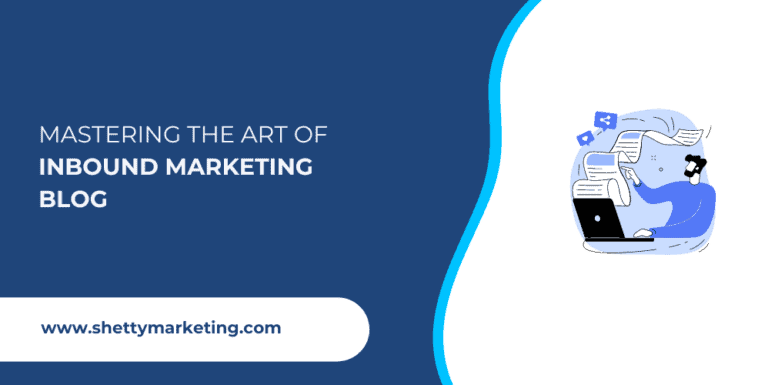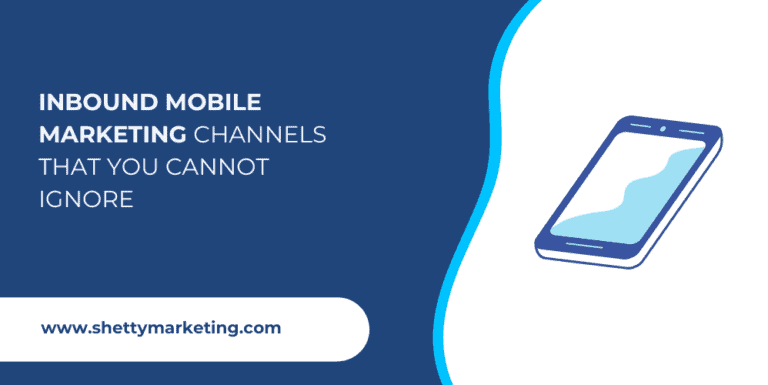To master the art of an inbound marketing blog, understanding how to tailor your content to the various stages of the buyer’s journey is essential.
By crafting informative pieces for TOFU, problem-solving content for MOFU, and decision-making resources for BOFU, you can effectively nurture leads towards conversion.
But, there’s a key element that can make or break your strategy – a secret ingredient that will elevate your blog from good to exceptional. Want to know what it is?
SEO (Search Engine Optimization)
By focusing on SEO, you can enhance your website’s ranking on search engine result pages, making it easier for your target audience to find you.
By incorporating relevant keywords and implementing SEO strategies, you can boost your visibility and attract potential customers organically.
Creating content that isn’t only engaging but also optimized for search engines is key to a successful inbound marketing strategy.
Inbound marketing blogging strategy to help you get started: Importance of the funnel
Understanding these stages will guide you in creating content that resonates with your audience at each phase of their decision-making process.
TOFU (Top of the funnel content)
In this initial phase, where awareness is the primary goal, your blog posts should focus on providing educational content that addresses the needs and questions of your target audience.
These TOFU blog posts serve as the entry point for potential customers into your sales funnel.
Utilizing keyword research tools like Ubersuggest or Google’s Keyword Explorer can help you identify relevant TOFU keywords to incorporate into your content, increasing its visibility to your target audience.
For instance, a blog post titled ‘The Project Manager’s Guide on How to Stay Focused at Work’ or ’10 Strategies for Staying Focused at Work’ exemplifies TOFU content by offering valuable insights to readers while introducing them to your brand.
MOFU (Middle of the funnel content)
To effectively shift from capturing potential customers’ attention at the top of the funnel (TOFU) stage to building trust and relationships at the middle of the funnel (MOFU) stage, your inbound marketing blogging strategy must focus on providing valuable insights and positioning your product as a solution.
In the MOFU stage, your content should address specific pain points while showcasing the value your offerings bring. Consider creating detailed blog posts that explore how your solution directly solves the customer’s problem. By offering in-depth explanations and showcasing expertise, you can build trust and authority with your audience.
For instance, crafting a blog post titled ‘How Notion can help you with fast-tracking projects’ can introduce project managers to the benefits of using the tool Notion in their workflows.
Remember, in the MOFU stage, your goal is to nurture leads by demonstrating how your product or service can effectively address their needs.
BOFU (Bottom of the Funnel)
At the BOFU stage, where leads are highly qualified and ready to make a purchase decision, your content plays a vital role in building trust and prompting action.
BOFU content should highlight special offers, competitor comparisons, and real-world use cases to reassure potential customers and guide them towards a purchase.
To effectively target BOFU content in your blogging strategy, aim for search terms that reflect a high purchase intent.
Utilize comparison keywords like ‘Your Product vs Competitor product,’ seek out product reviews such as ‘Product X review,’ and showcase success stories with terms like ‘How Product X helped generate 1m in sales.’
How to find the right keywords for blogs?
When searching for the right keywords to target in your content, considering various factors beyond just using keyword research tools like Ubersuggest or Google Keyword Explorer is vital.

It’s crucial to realize that randomly selecting keywords won’t ensure a high ranking.
In SEO, your ability to rank for a keyword is closely linked to your investment in Off-page SEO.
While some believe in driving traffic through Topical authority, in competitive industries, significant investment is often necessary to rank for commercial keywords.
Start by targeting long-tail keywords that are easier to rank for initially. Tools like SemRush and Moz can assist in determining the number of links needed to rank for a keyword, with SemRush’s ‘Keyword Difficulty’ metric simplifying the process. Lower Keyword Difficulty indicates easier ranking.
Platforms like Lowfruits can also help in finding keywords with low competition, making it easier to rank.
Strategically approaching keyword selection, considering both competition and investment, is crucial for achieving optimal results.
How to find keywords of low competion using Moz for free?
Finding the right keywords is essential for enhancing your blog’s visibility and attracting the right audience.
However, not everyone has the budget to invest in expensive SEO tools like SEMrush or Ahrefs. But fear not, for there is a free and simple way to uncover keywords with low competition using Moz.
To start, you’ll need to install the Moz bar chrome extension. Once you’ve signed up and activated the extension, you’ll gain access to valuable metrics like Domain Authority (DA) and Page Authority (PA) scores for the links on a page. These scores can be your secret weapon in uncovering low-competition, long-tail keywords.
For example, let’s say you’re searching for ‘Project management tools’ on Google. With the Moz bar activated, you’ll see the DA and PA scores for the pages that show up in the search results.
Look for keywords where the pages have a low number of links pointing to them. This indicates lower competition, similar to finding keywords with a low Keyword Difficulty (KD) score in other tools.

While this method may require a bit more time and effort compared to using traditional keyword difficulty scores, it offers a cost-effective alternative for those on a budget. By leveraging the data provided by Moz, you can uncover valuable keywords that can help your blog stand out in a crowded digital landscape.
So, next time you’re on the hunt for the perfect keywords, give Moz a try.
Learn more: How long does it take to get organic traffic? | Know your SEO Timeline
How do I get these links?
To acquire quality links for your website, consider investing in reputable vendors like Matt Diggity’s Authority Builders rather than relying solely on writing good content.
While creating valuable content is essential, in reality, purchasing links from vendors on platforms like Upwork or Fiverr is often necessary. However, be cautious as not all links acquired this way may be of high quality. It’s important to distinguish between good and bad quality links, as investing in the right ones can greatly benefit your site’s SEO.
When it comes to purchasing links, quality often comes at a price. While reputable vendors like Matt Diggity’s Authority Builders may offer higher-priced links, they’re usually worth the investment due to their credibility and effectiveness.
Leveraging blogs to capture leads through lead magnets
To capture leads effectively through your blogs, you can utilize lead magnets tailored for each stage of the buyer’s journey – TOFU, MOFU, and BOFU.

Lead magnets such as e-books, webinars, or templates can entice visitors to provide their contact information in exchange for valuable content.
Strategically placing these lead magnets within your blog posts can help you convert visitors into leads and nurture them towards making a purchase decision.
Lead magnets for TOFU
Leveraging blogs to capture leads through lead magnets in the TOFU stage involves offering valuable resources like Cheat Sheets, Checklists, Quizzes, Scripts, and Templates. These lead magnets serve as enticing offers for visitors to exchange their contact information, allowing businesses to nurture relationships with potential customers.
By providing these resources upfront, businesses can establish trust and credibility with their audience, laying a strong foundation for future interactions.
Cheat Sheets are concise summaries of key information, Checklists help users stay organized, Quizzes engage visitors and provide tailored insights, Scripts offer guidance for specific tasks, and Templates provide practical frameworks for various needs. Each of these lead magnets is designed to deliver value and address the pain points of the target audience in the early stages of the buyer’s journey.
When strategically implemented within blog content, these lead magnets can effectively capture emails, initiate meaningful conversations, and guide prospects towards further engagement with the brand.
Lead Magnets for MOFU
Capture leads in the MOFU stage by offering more valuable lead magnets that demonstrate the potential value of your solution or product.
Webinars, Comparison Guides, and Podcasts are excellent choices to engage with leads at this stage of the marketing funnel.
Webinars provide an interactive platform where you can showcase your expertise and educate your audience about how your product or service can address their needs.
A Comparison Guide can help prospects understand the unique value proposition of your offering compared to competitors, assisting them in making informed decisions.
Podcasts offer a convenient way for leads to consume valuable content while multitasking, positioning your brand as a thought leader in the industry.
Lead magnets for BOFU
Highlight your unique selling proposition and stand out from competitors by offering lead magnets such as Live Demos, Comparison Charts, and Case Studies to capture leads at the BOFU stage effectively.
At this Bottom of the Funnel (BOFU) stage, potential customers are close to making a purchase decision. Providing them with valuable resources like live demonstrations of your product or service can give them a hands-on experience, showcasing its benefits firsthand.
Comparison charts help them see how your offering stands out from alternatives, making your value proposition crystal clear. Additionally, real-life case studies can demonstrate successful outcomes and build trust in your brand.
Conclusion
To wrap up, mastering the art of an inbound marketing blog involves strategic content creation, keyword research, and lead engagement tactics to attract and nurture potential customers.
By understanding the buyer journey and providing valuable resources at each stage, businesses can drive traffic, improve online visibility, and convert leads into loyal customers.
Remember, consistency, relevance, and quality are key to building a successful inbound marketing blog that resonates with your target audience.




